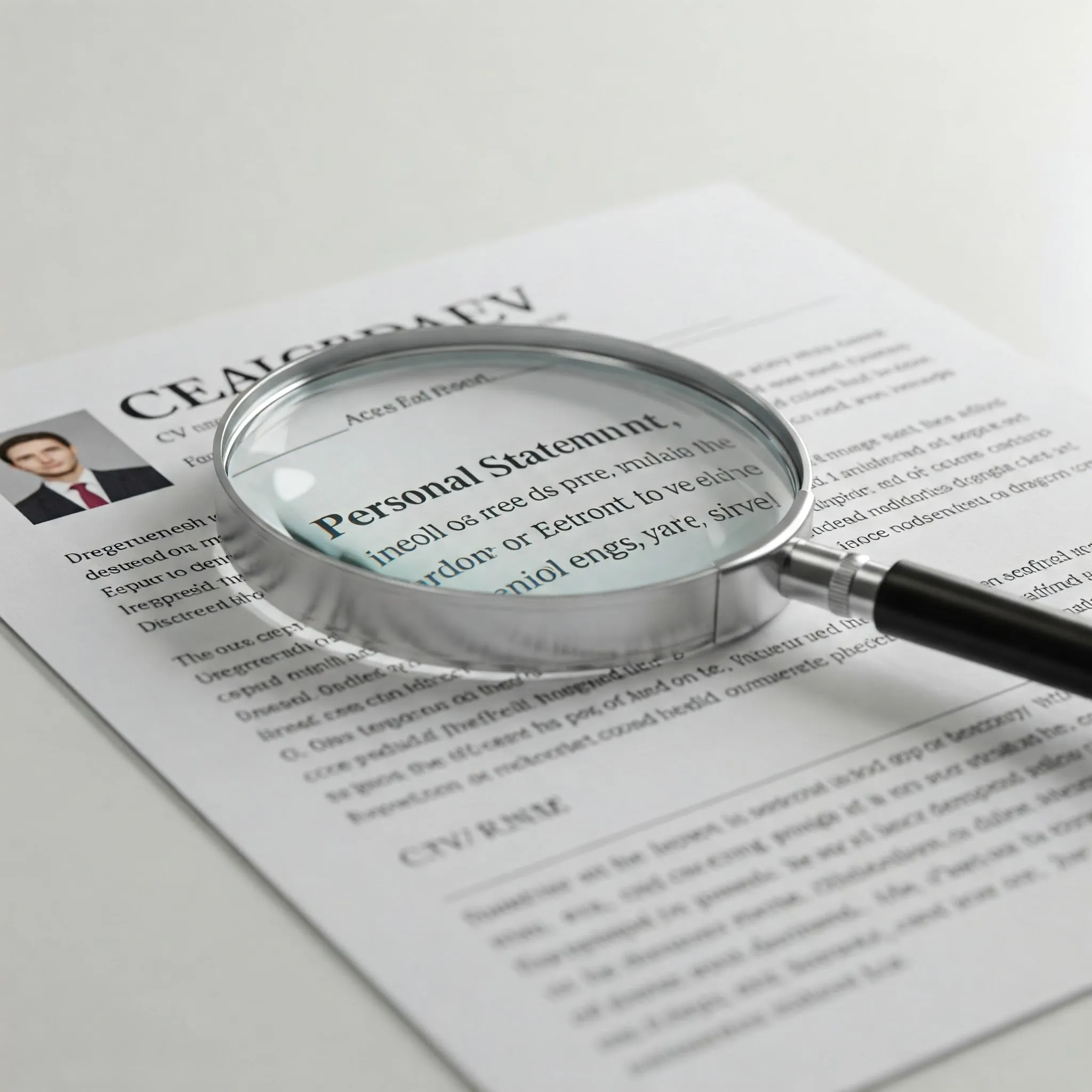How to Handle Employment Gaps on Your CV

Addressing the Employment Gap Challenge
Navigating the modern job market often involves confronting a common, yet frequently anxiety-inducing, element on a Curriculum Vitae (CV): the employment gap. These periods of unemployment, visible breaks in a chronological work history, are a source of significant concern for many job seekers. The fear is palpable – will recruiters view this gap with suspicion? Will it be perceived as a lack of ambition, skill decay, or unreliability? Will it ultimately hinder the chances of securing a desirable new role?
While these anxieties are understandable, rooted in older, more rigid expectations of continuous career progression, it's crucial to recognize the evolving reality of work. Employment gaps are not just common; they are increasingly prevalent in today's dynamic, fluid, and often unpredictable job market. The rise of the gig economy, project-based work, industry shifts, global events, and a growing emphasis on work-life balance and personal well-being mean that career paths are rarely linear. Life happens – and sometimes, that means stepping away from formal employment for a while.
The reasons for these breaks are as diverse as the individuals experiencing them: raising a family, caring for loved ones, pursuing further education, recovering from illness, navigating redundancy, pivoting careers, or simply taking necessary time for personal recalibration. Progressive employers and savvy recruiters understand this. They recognize that a gap doesn't automatically equate to a negative attribute.
This comprehensive guide aims to demystify the employment gap, providing expert guidance and actionable CV gap strategies for effectively addressing these periods in your job application materials and during crucial interview stages. We will explore how to handle employment gaps on CV documents with transparency and strategic positioning. Furthermore, we will delve into techniques to confidently explain resume gaps in cover letters and interviews, transforming potential points of concern into demonstrations of resilience, adaptability, learning, and growth. The core message is one of empowerment: an employment gap need not be a career obstacle. When approached thoughtfully and communicated effectively, it can become an integral, even valuable, part of your unique professional story.
Understanding the Landscape: Why Employment Gaps Happen
An employment gap, fundamentally, is any significant period where an individual's resume or CV does not reflect active, formal employment. Historically, a seamless, uninterrupted work history was often seen as the gold standard. However, the multifaceted nature of modern life and careers means numerous legitimate and understandable reasons exist for these breaks. Understanding these common causes provides essential context and helps normalize the experience, both for job seekers and employers.
A. Personal and Family-Related Reasons: Life's personal demands are a primary driver of employment gaps.
- Parenthood and Childcare: Taking time off to raise young children or manage childcare responsibilities is perhaps one of the most common reasons, particularly for primary caregivers. This period, while away from the traditional workforce, often involves honing skills like time management, negotiation, budgeting, and crisis resolution.
- Elder Care and Family Illness: Increasingly, individuals step away from their careers to provide essential care for aging parents, sick spouses, or other family members facing health challenges. This demanding role cultivates empathy, patience, advocacy skills, and logistical coordination.
- Personal Health and Wellness: Dealing with a significant illness, injury, or surgery necessitates time for recovery. Beyond physical health, the growing awareness and destigmatization of mental health issues mean individuals may take breaks to address burnout, anxiety, depression, or other mental health concerns, prioritizing long-term well-being.
- Relocation: Moving to a new city, state, or country, often necessitated by a partner's career opportunity or other personal reasons, inevitably creates a transition period involving settling in, establishing a new network, and searching for appropriate local employment.
- Bereavement: Coping with the loss of a close family member requires time and space, often leading to a necessary pause in professional life.
B. Educational and Professional Development Pursuits: Strategic breaks for learning and growth are common and often viewed positively.
- Returning to Education: Many professionals choose to enhance their qualifications by pursuing a new degree (Bachelor's, Master's, PhD), diploma, or professional certification, requiring full-time study and a break from employment.
- Skill Enhancement: Taking targeted courses, attending intensive workshops, or participating in coding bootcamps to acquire new technical skills or deepen expertise in a specific area can lead to short-term gaps but long-term career benefits.
- Sabbaticals and Personal Growth: Some individuals intentionally take sabbaticals for travel, self-discovery, volunteer work abroad, or pursuing personal passions, aiming for rejuvenation and broader life experience before re-engaging with their careers.
C. Career-Related Transitions and Circumstances: The nature of employment itself often leads to gaps.
- Layoffs and Redundancy: Economic downturns, company restructuring, mergers, acquisitions, or shifts in business strategy frequently result in involuntary job loss, leaving individuals unexpectedly seeking new positions.
- Strategic Job Searching: Rather than accepting the first available offer, some individuals take a deliberate pause to carefully research, network, and identify the right next role that aligns with their long-term career goals and values.
- Career Change or Industry Pivot: Transitioning to a completely new field or industry often requires time for retraining, networking in the new sector, and finding an entry point, potentially involving a period of unemployment.
- Business Closure or Venture Failure: Entrepreneurs whose startups or small businesses do not succeed will naturally have a gap following the venture's conclusion as they transition back to traditional employment.
- Freelance, Contract, or Gig Work: Professionals working on fixed-term contracts or project-based freelance assignments often experience gaps between projects. While actively seeking the next contract, their CV might show intermittent periods without a formal employer listed.
- Ending a Toxic Work Environment: Sometimes, leaving a detrimental work situation without another job immediately lined up is a necessary step for personal well-being, leading to a short gap during the subsequent job search.
While historical biases might have cast skepticism on certain gap reasons, the contemporary recruitment landscape is evolving. Recruiters are increasingly adopting a more holistic and empathetic view, recognizing that life circumstances, strategic decisions, and external economic factors play significant roles in shaping career trajectories. The critical factor is not the mere existence of a gap, but the candidate's ability to transparently and positively articulate the reason behind it and, crucially, highlight any growth, learning, or relevant experiences gained during that time.
Crafting Your Narrative: Explaining Employment Gaps in Your Job Application
Proactively and strategically addressing employment gaps is essential. Your application materials – specifically the cover letter and CV – and your performance during the interview are the primary platforms for shaping this narrative. The goal is to provide clear context, alleviate potential concerns, and refocus attention on your suitability for the role. Effectively knowing how to explain resume gaps is a critical skill in this process.
A. The Cover Letter: Your Opportunity to Provide Context
The cover letter is often your first, and arguably best, opportunity to preemptively address an employment gap. It allows you to frame the narrative on your terms before a recruiter even scrutinizes the dates on your CV.
- Be Honest, Brief, and Positive: Don't dwell on the gap, but don't ignore it either if it's significant or recent. A single, concise sentence is often sufficient. For example: "Following my role at [Previous Company], I took a planned career break to pursue a [Certification/Degree] in [Field], which has further equipped me for the challenges of this position." Or, "I temporarily stepped away from my career from [Date] to [Date] to focus on family care responsibilities, during which I further developed my skills in [Relevant Skill 1] and [Relevant Skill 2]."
- Focus on the Positive Outcomes: Immediately pivot from the reason for the gap to what you gained or accomplished during that time. Did you learn a new language? Master new software? Volunteer? Manage complex family logistics? Complete online courses? Highlight activities that demonstrate initiative, learning, or skills relevant (even tangentially) to the job you're applying for.
- Connect to Current Goals: Explicitly link the gap period, or the decision to return to work now, to your enthusiasm for the specific role and company. Show that the break was a chapter, and you are now ready, focused, and motivated for this next step. Example: "This period of professional development reaffirmed my passion for [Industry/Field], and I am now eager to apply my enhanced skills and renewed focus within a dynamic organization like [Company Name]."
- Avoid Oversharing: Maintain professionalism. While honesty is key, avoid excessive personal details, especially regarding sensitive health issues or negative circumstances surrounding a departure. Keep the explanation concise and relevant to your professional journey. TMI (Too Much Information) can make recruiters uncomfortable.
- Emphasize Enthusiasm: Conclude the relevant paragraph by reiterating your strong interest in the specific opportunity. Your forward-looking attitude is crucial.
- Tailor the Explanation: Just as you tailor your cover letter to each job, tailor the brief explanation of your gap to align with the requirements and context of the role you seek.
B. During the Interview: Addressing Questions with Confidence
If your CV shows a noticeable gap, be prepared for interviewers to ask about it. This is a standard part of their due diligence. Seeing it as an opportunity rather than an interrogation is key.
- Prepare Your Response: Don't be caught off guard. Rehearse a brief, positive, and honest explanation for the gap. Practice saying it out loud so it sounds natural and confident, not defensive or apologetic. This is a core part of learning how to effectively explain resume gaps.
- Keep it Concise: Similar to the cover letter, provide a brief explanation (e.g., "I took that time to care for a family member," or "My previous role was eliminated due to restructuring, and I took the opportunity to complete a project management certification").
- Pivot Quickly to Relevance: Immediately transition to what you did or learned during the gap that benefits the potential employer. "During that time, I focused on [Activity/Learning], which allowed me to develop [Skill X] and [Skill Y], both of which I see as highly valuable for this [Job Title] role."
- Highlight Skills and Accomplishments: Frame the time off productively. Did you manage a complex project (even a personal one)? Did you volunteer, take courses, freelance, or develop a new competency? Focus on achievements and skills gained, however informal.
- Maintain Positive Body Language: Deliver your explanation with confidence. Make eye contact, sit upright, and maintain a calm and positive demeanor. Avoid fidgeting or appearing uncomfortable.
- Avoid Negativity: Never speak ill of former employers, colleagues, or circumstances, even if the gap resulted from a negative situation like a layoff or a toxic environment. Focus on the facts neutrally and pivot to your future aspirations. Frame a layoff as a business decision: "The company underwent a significant reorganization, and my division was impacted."
- Show Eagerness to Return: Clearly articulate your motivation and readiness to re-enter the workforce and contribute to this specific company and role.
- Be Ready for Follow-Ups: The interviewer might ask a follow-up question. Answer honestly and concisely, always steering the conversation back to your qualifications and enthusiasm for the job.
By preparing thoughtful, concise, and positive explanations for both your written materials and verbal interactions, you can effectively neutralize concerns about employment gaps and keep the focus squarely on your value as a candidate.
Addressing the Gap Directly on Your CV: Strategic Presentation
While the cover letter and interview offer platforms for narrative explanation, your CV itself needs to present your work history, including any gaps, clearly and strategically. Knowing how to handle employment gaps on CV documents involves careful formatting and thoughtful content choices. Here are several CV gap strategies to consider:
- Honesty Remains Paramount: Never falsify employment dates or invent positions to cover a gap. Background checks are standard practice, and dishonesty is grounds for immediate disqualification or later termination. Transparency, handled strategically, is always the better approach.
- Consider the Gap's Age and Duration:
- Outdated Gaps: If a gap occurred more than 10-15 years ago, and your recent experience is strong and continuous, it may not need explicit mention, especially if you are omitting earlier, less relevant roles to keep the CV concise. Recruiters are primarily focused on your recent history.
- Short Gaps (Under 6 months): These are often less concerning. Using years only (e.g., "2023-2024") instead of months and years for employment periods can sometimes visually minimize very short gaps between roles. However, be prepared to explain if asked.
- Longer Gaps (Over 6-12 months): These generally warrant some form of notation or explanation, even if brief.
- Choose the Right Resume Format:
- Chronological: The most common format, listing jobs in reverse chronological order. While it makes gaps obvious, it's preferred by many recruiters for its clarity. If using this, you'll need to address the gap directly.
- Functional: Focuses on skills and abilities rather than a timeline. It can de-emphasize gaps but is often viewed with suspicion by recruiters, as it can obscure work history and career progression. Use with caution, perhaps only if your work history is very fragmented or you're making a major career change.
- Combination (Hybrid): Often the best compromise. It starts with a strong summary and skills section, followed by a reverse chronological work history. This allows you to highlight key qualifications upfront while still providing the timeline recruiters expect.
- Directly Address the Gap in the Work History: Instead of leaving a blank space, you can insert a brief, neutral entry for the gap period within your chronological work history. Examples:
- "Professional Sabbatical (March 2023 – January 2024) - Focused on [Briefly mention activity, e.g., advanced certification, family care, significant travel/project]."
- "Planned Career Break for Family Responsibilities (June 2022 – May 2023)"
- "Further Education – MSc in Data Science (September 2022 – August 2023) - University of [Name]"
- "Independent Project Work & Skill Development (April 2023 – Present) - Focused on [mention skills/areas]." This shows proactivity and prevents recruiters from guessing or assuming the worst.
- Treat Relevant Activities as Experience: If you engaged in significant activities during your gap, list them appropriately.
- Volunteer Work: Detail your role, responsibilities, and achievements, treating it like a job entry. Highlight transferable skills.
- Freelance/Consulting Projects: List key projects, clients (if permissible), and accomplishments. Even short-term gigs show continued engagement.
- Major Personal Projects: If you built an app, wrote a book, organized a significant community event, or undertook substantial research, consider including it, focusing on the skills utilized (project management, technical skills, research, communication).
- Education/Certifications: List completed degrees, certifications, or significant courses in the Education section, ensuring the dates align with the gap period.
- Utilize a Professional Summary/Objective: Start your CV with a compelling summary that highlights your key skills, experience level, and career aspirations. If returning after a break, you can subtly incorporate this. Example: "Highly motivated [Your Profession] with X years of experience in [Key Areas], seeking to leverage expertise in [Skill 1] and [Skill 2] in a challenging [Job Type] role. Recently enhanced skills through [mention activity during gap, e.g., certification] and eager to contribute to [Company Type/Mission]." An Objective can explicitly state your goal of returning to your field after a planned break.
By employing these CV gap strategies, you take control of the narrative presented in your primary application document, demonstrating transparency, purpose, and continued relevance despite breaks in formal employment.
Framing Your Time Off Positively: Highlighting Growth and Skills
Perhaps the most crucial element in successfully navigating employment gaps is your ability to frame the time off not as a void, but as a period of alternative activity, learning, or growth. Shifting the perspective from "time off work" to "time spent on other valuable pursuits" is key.
- Identify Transferable Skills: Almost any significant life activity undertaken during a gap involves developing or honing transferable skills relevant to the workplace.
- Family Care: Developed empathy, patience, negotiation, time management, crisis management, budgeting, advocacy, multi-tasking.
- Further Education: Acquired new knowledge, technical skills, research abilities, critical thinking, project management (theses/dissertations), presentation skills.
- Travel: Enhanced adaptability, cross-cultural communication, problem-solving (navigating unfamiliar environments), budgeting, planning, language skills (if applicable), independence, resilience.
- Personal Projects (e.g., home renovation, managing investments, writing): Demonstrated project management, planning, budgeting, research, discipline, creativity, technical skills (if applicable).
- Volunteering: Showcased teamwork, communication, leadership (if applicable), specific skills related to the role (e.g., event planning, teaching, fundraising), commitment to community.
- Dealing with Health Issues: Demonstrated resilience, perseverance, self-advocacy, problem-solving in navigating healthcare systems.
- Freelancing/Gig Work: Showcased self-discipline, client management, marketing, specific technical/creative skills, adaptability.
- Emphasize Learning and Development: Frame the gap as an investment in yourself. Did you take online courses (Coursera, LinkedIn Learning, edX)? Attend webinars? Read industry publications? Work towards a certification? Even self-directed learning shows initiative and a commitment to staying current. Highlight specific software learned, methodologies studied, or concepts mastered.
- Showcase Initiative: If your gap involved launching a personal project, starting (even if unsuccessfully) a small side business, or taking the lead in a volunteer organization, emphasize the entrepreneurial spirit, leadership, and proactivity involved.
- Focus on Personal Growth: Sometimes the most significant gain is personal clarity, resilience, or a renewed sense of purpose. While keeping it professional, you can touch upon this briefly, especially if it relates to your career direction. "This period allowed for significant personal reflection, solidifying my commitment to pursuing a career in [Target Field]."
- The "Grasped Opportunity" Mindset: Instead of viewing the break as something that happened to you (a sacrifice, a setback), frame it as an opportunity you grasped – whether it was the opportunity to care for family, the opportunity to travel, the opportunity to heal, or the opportunity to retrain. This proactive language shifts the tone from passive to empowered.
- Connect Gains to Job Requirements: Explicitly link the skills or insights gained during the gap to the specific requirements listed in the job description. "My experience managing complex family healthcare logistics honed my ability to coordinate multiple stakeholders under pressure, a skill directly applicable to the Project Manager role."
Remember, hiring managers are human. They have likely faced or know people who have faced similar life events. By framing your time off positively and focusing on the valuable experiences and skills acquired, you demonstrate resourcefulness and a growth mindset – qualities highly valued in any employee.
The Recruiter's Lens: Understanding Their Perspective
To effectively address employment gaps, it helps to understand how recruiters and hiring managers typically view them. While perceptions are becoming more progressive, certain factors still influence their assessment.
- Empathy and Understanding: Most recruiters recognize that life isn't linear. They understand common reasons for gaps like parental leave, education, health issues, layoffs, or caring for family. They are less likely to penalize candidates for gaps with clear, understandable explanations.
- The Concern is the Unexplained: An undocumented, lengthy gap with no context is a red flag. Recruiters might wonder: Was the candidate job searching unsuccessfully for a very long time? Did they leave a previous job under difficult circumstances they are trying to hide? Are their skills rusty? Are they unmotivated? Providing a brief, proactive explanation alleviates these concerns.
- Seeking Honesty and Transparency: As mentioned before, attempts to hide or fudge dates are deal-breakers. Recruiters value honesty. A straightforward explanation, even if the reason is less "positive" (like a layoff), is always preferable to deception.
- Assessing Productivity and Initiative: Recruiters want to see that the candidate remained engaged and proactive during their time away from formal work. This doesn't necessarily mean working. It could involve:
- Learning: Courses, certifications, self-study.
- Networking: Attending industry events (even virtual), informational interviews.
- Volunteering: Contributing to a cause, keeping skills sharp.
- Project Work: Personal projects, freelance assignments. Showing that you used the time constructively demonstrates motivation and a commitment to your professional field.
- Evaluating Motivation to Return: A key question for the recruiter is: Is this candidate genuinely motivated to return to work now, and are they specifically interested in this role and this company? Your explanation should convey enthusiasm, readiness, and a clear reason for seeking this particular opportunity.
- Skills Relevance and Refreshment: For longer gaps, especially in rapidly evolving fields like technology, recruiters might have concerns about skill atrophy. Highlighting any steps taken to stay current (courses, projects, reading) is crucial. Framing transferable skills effectively also helps bridge this potential concern.
- Consistency Check: Recruiters look for consistency between your CV, cover letter, LinkedIn profile, and interview answers. Ensure your explanation is consistent across all platforms.
By understanding that recruiters are primarily looking for context, honesty, proactivity, and motivation, you can tailor your communication to address their underlying questions and build confidence in your candidacy. How you explain resume gaps needs to anticipate and address these potential recruiter concerns.
Common Mistakes to Avoid When Addressing Employment Gaps
While addressing gaps proactively is encouraged, certain pitfalls can undermine your efforts and negatively impact your application. Avoiding these common mistakes is crucial:
- Lying or Fudging Dates: This is the cardinal sin. Dishonesty about employment dates or fabricating roles is easily exposed through background checks and reference calls, leading to immediate rejection or termination if discovered later.
- Trying to Hide the Gap (e.g., Over-reliance on Functional Resumes): While formatting choices matter, using a purely functional resume solely to obscure dates is often transparent to experienced recruiters and can raise more suspicion than it alleviates. A combination format is usually safer if you want to emphasize skills first.
- Oversharing Personal Details: Providing excessive, intimate details about personal health issues, family drama, or difficult financial situations is unprofessional and unnecessary. Keep the explanation brief, factual, and focused on the professional implications (i.e., the reason for the break and your readiness to return).
- Making Excuses or Sounding Defensive: Present the reason for the gap factually and confidently. Avoid language that sounds like you're making excuses or feel overly apologetic for taking time off. Own your history.
- Speaking Negatively About Former Employers/Situations: Even if your gap resulted from a layoff, firing, or toxic work environment, maintain professionalism. Do not badmouth previous companies, bosses, or colleagues. State the facts neutrally (e.g., "The company restructured," "It wasn't the right cultural fit," "My role was eliminated") and focus on what you learned and what you seek moving forward.
- Being Vague or Evasive: A vague explanation like "I was dealing with some personal matters" can invite more suspicion than a slightly more specific, yet still professional, reason like "I took time off to focus on family health needs." Provide just enough context to be clear without oversharing.
- Ignoring the Gap Altogether: Pretending a significant, recent gap doesn't exist on your CV or failing to prepare an explanation for the interview is a mistake. It leaves recruiters to fill in the blanks, often with negative assumptions. Address it proactively and briefly.
- Underselling Yourself: After a period of unemployment, confidence can sometimes waver. Avoid downplaying your skills or experience or feeling pressured to accept roles significantly below your qualification level purely because of the gap. Remember the value you bring.
- Failing to Showcase Growth or Activity: Simply stating you had a gap isn't enough. The strongest approach involves highlighting what you did during that time – learning, volunteering, project work, skill development. Missing this opportunity weakens your narrative.
By steering clear of these common errors, you maintain professionalism, build trust, and present your employment gap in the most constructive way possible.
Conclusion: Turning Gaps into Opportunities for Growth
Employment gaps, once viewed with considerable skepticism, are an increasingly understood and accepted feature of modern career paths. They are not automatic disqualifiers, nor do they inherently signal a lack of ambition or capability. Life events, strategic choices, and the evolving nature of work itself contribute to these breaks. The key lies not in the existence of the gap, but in how effectively you handle employment gaps on CV documents and confidently explain resume gaps during the application and interview process.
By embracing honesty and transparency, proactively providing context in your cover letter and CV using thoughtful CV gap strategies, and preparing concise, positive explanations for interviews, you can successfully navigate this aspect of your job search. The crucial step is to reframe the narrative: shift the focus from absence to activity, from setback to growth. Highlight the transferable skills honed, the knowledge acquired, the resilience built, and the personal or professional development undertaken during your time away from traditional employment.
Consider your career break not merely as time off, but as a "grasped opportunity" - an opportunity to learn, heal, care, explore, or recalibrate. When presented thoughtfully, this period can demonstrate adaptability, self-awareness, diverse life experience, and a refreshed perspective-all valuable assets you bring to a potential employer. By addressing employment gaps with confidence and strategic communication, you can transform what might seem like a vulnerability into a testament to your unique journey and multifaceted strengths, ultimately turning potential obstacles into bridges toward your next career opportunity.





